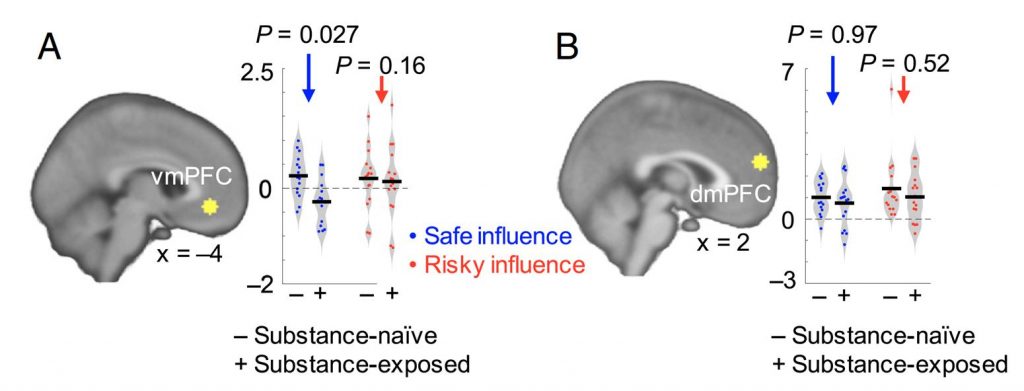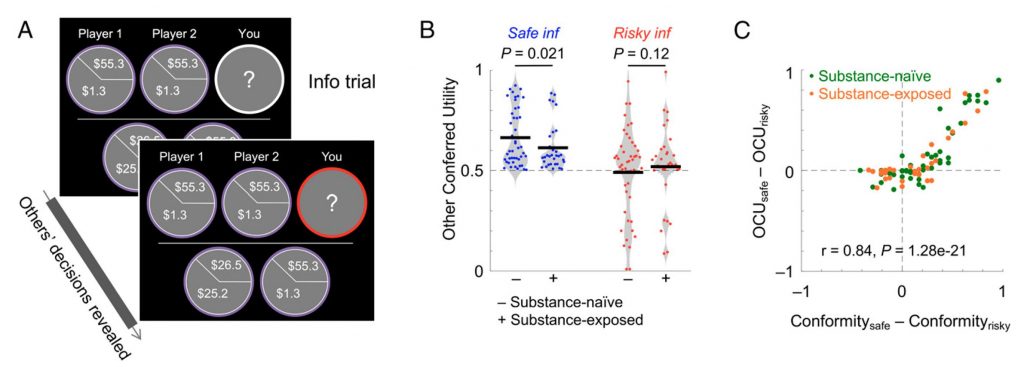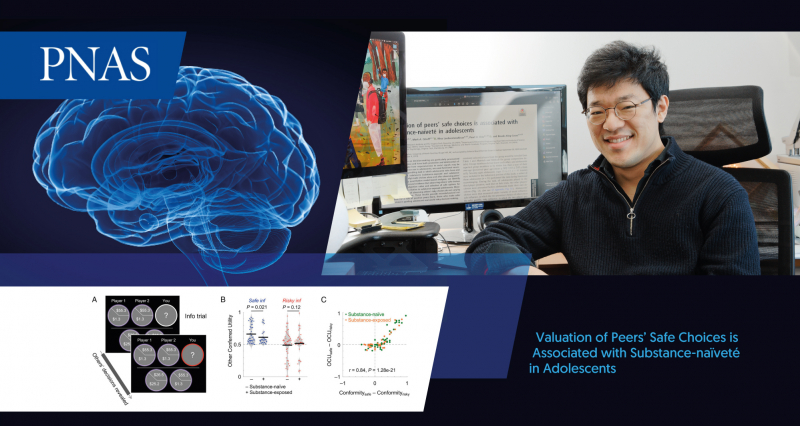Peer pressure, a powerful influence in the lives of students, has rather negative connotations in society, which includes the influence of peers on juvenile delinquency and the use of alcohol or cigarettes. According to a new study, affiliated with UNIST, observing social peers making safe choices may lead some teens to make healthy decisions than they would otherwise.
Professor Dongil Chung from the Department of Biomedical Engineering at UNIST, in collaboration with neuroscientists from Virginia Tech in the United States, has examined the influential power of safe teenagers among peers in a new neuroeconomics study. Using quantitative model-based analyses, they identified behavioral and neural evidence that observing others’ safe choices increases the subjective value and selection of safe options for substance-naïve relative to substance-exposed adolescents.

Figure 1. Brain scans and computational modeling were combined to understand how social peers sway decision-making in teenagers.
To evaluate how responsiveness to social signals may be linked to substance use in adolescents, the research team used functional neuroimaging and a decision-making game in which adolescents who have and have not used substances (substance-exposed and substance-naïve, respectively) made choices alone and after observing peers’ decisions.
The volunteers were presented with a decision-making game that required them to choose between a series of safer and riskier choices. For instance, they could pick option A (safer choice), which guarantees them earnings of about $25, or option B (riskier choice), which gives them a fifty-fifty chance of producing $55 or just $1. The teens made these gambling choices both alone (Solo trials) and after observing others’ choices (Info trials). During task performance, the research team monitored their brain activity using functional magnetic resonance imaging (fMRI) machines.

Figure 2. Substance-naïveté is associated with the greater valuation of peers’ safe choices
The research team combined brain scans and computational modeling to understand how social peers sway decision-making in teenagers. Through this, the team identified behavioral and neural evidence that observing others’ safe choices increases the subjective value and selection of safe options for substance-naïve relative to substance-exposed adolescents. This was evidenced by increased neural activity in the ventromedial prefrontal cortex, a region of the brain responsible for encoding social rewards. Their findings also showed that the effects of observing others’ risky choices do not vary by substance exposure.
“Our results provide neural and behavioral evidence for the role of positive social peers in influencing decision-making in adolescents,” noted the research team.
The findings of this research have been published in the November 2020 issue of the journal PNAS (Proceedings of the National Academy of Science). This work has been supported in part by the National Institutes of Health (NIH).
Journal Reference
Dongil Chung, Mark A. Orloff, Nina Lauharatanahirun, et al., “Valuation of peers’ safe choices is associated with substance-naïveté in adolescents,” PNAS, (2020).














